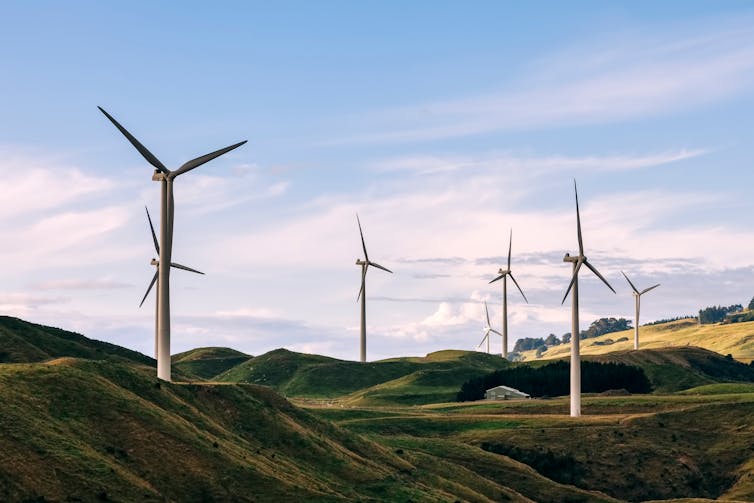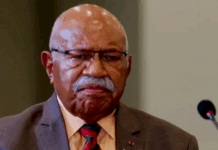
ANALYSIS: By Thomas Nash, Massey University
The year is 2040 and Aotearoa New Zealand has reduced its greenhouse gas emissions consistent with the commitment to keep global heating below 1.5°C above pre-industrial temperatures.
The economy, society, local government, transport, housing and urban design, energy, land use, food production and water systems have all changed significantly. Fossil fuels have been mostly phased out internationally and import taxes are imposed on high emissions goods.
New Zealand is now a world leader in natural infrastructure, clean hydrogen energy, engineered wood and high quality low emissions food. Despite ongoing challenges, with a prosperous economy, most people think the transition was worth it.
- READ MORE: When climate change and other emergencies threaten where we live, how will we manage our retreat?
- 2020 hindsight: can New Zealand apply the political lessons of covid-19 in the year ahead?
Cities are more pleasant places to live, air and water are cleaner, nature is more abundant.
Following the emissions budgets stipulated by the Zero Carbon Act in late 2021, emissions are now properly priced into all economic decisions. The Emissions Trading Scheme has been reinforced and the price of emitting carbon has stabilised at $300 per tonne, after hitting $75 in 2022 and $200 by 2030.
In 2026, New Zealand signed the International Treaty to Phase out Fossil Fuels, which prohibits fossil fuel extraction, phases out use and requires international cooperation on renewable energy.
Carbon import taxes mean many high emissions commercial activities are no longer economically viable. Trade unions have played a major role in the industrial strategy underpinning the transition to a lower emissions economy.
Māori economy bigger than any other sector
The Māori economy is bigger than any other sector and has benefited from wider international recognition of the long term value of climate and biodiversity work.

New Zealand’s economy is based on productive activity that stays within planetary boundaries – including emissions and pollution of land and water – while respecting social requirements, such as a decent standard of living for all.
Building on their successful response to the covid pandemic, marae-based organisations are prominent as centres of excellence for climate and economic strategy, health and social services, managed retreat from coastal areas and natural infrastructure development.
Public financing was radically rebalanced in the 2020s, delivering more for local government and a greater partnership between councils, government and Māori organisations. This has enabled far better delivery of local services and much more meaningful connections within communities.
Councils and council organisations laid the groundwork for the climate transition, helping address the unequal impacts of climate change on different groups. Councils and mana whenua collectively administer substantial funds for regional development.

Fast, frequent rail
The government’s 2022 Climate Budget provided the massive injection of funds required to redesign our cities, which are now organised around mass transit, safe and segregated routes for cycling and vibrant pedestrian areas. People can access fast, frequent light rail and dedicated busways with low cost fares. Less road space is required for driving, which is more accessible now for those who need it, including disabled people and service vehicles.
People travel between cities primarily via electric rail, managed by a new national passenger rail agency InterCity, which acquired the InterCity regional bus operator in 2023. Through major reforms in 2024, KiwiRail became a dedicated rail freight operator. A new government agency, OnTrack, oversees maintenance and renewal of tracks and rail infrastructure.
Passenger rail services run across the North Island main trunk line on improved electrified tracks at up to 160kph. South Island rail uses hydrogen trains fuelled by locally produced green hydrogen.
Most of the work to upgrade transport, housing and energy infrastructure has been done by a new Ministry of Green Works set up in 2025. This Ministry partners with local hapū and iwi, as well as councils through regional hubs. It is backed by the government’s expanded Green Investment Finance company.

Anger over housing for all
Anger at the divide between property owners and renters culminated in a general rent strike in 2024. The government responded with new financial rules ending the treatment of housing as an asset class. Kāinga Ora, Māori organisations and councils have undertaken a massive public housing construction effort.
Most new housing is now public infrastructure rather than private homes built to store individual wealth. Public ownership has expanded, in particular for entities that provide core services such as transport, energy and water.
In 2024, the government worked with councils to focus plans on quality universal design housing. Since the new building code was adopted in 2025, all new homes have high standards for energy efficiency and accessibility. Higher density apartments line public transport routes in the main centres, with terraced homes in smaller towns. Structural timber has replaced concrete and steel in many construction projects.
Changes to housing, transport and urban design have supported improvements in health, well-being and physical activity. Health improved dramatically after universal basic services were introduced in 2024 to cover free visits to the doctor and dentist as well as free childcare and elderly care.

Energy goes green
Electricity generation has doubled, with a mix of wind, solar and geothermal. Many more energy storage facilities exist, including pumped hydroelectricity. Distributed energy is commonplace. Many councils have helped their communities set up local solar schemes and dozens of towns are completely independent of the national grid.
Green hydrogen is produced at the converted aluminium smelter at Tiwai Point using hydroelectricity. This is used in heavy industry and transport and exported from Southport.
In 2027, after New Zealand blew its first carbon budget, the government replaced MBIE with a new Ministry for Economic Transition. The ministry oversaw the transition to green jobs via a universal job guarantee scheme.
It also supported a dramatic reduction in energy use in all parts of society and the economy. This effort had a greater impact on emissions reduction than the replacement of energy and fuel with renewable sources.
The land heals
In 2025, the government established a Natural Infrastructure Commission. The term “natural infrastructure” emerged in the 2020s as a term to include native forests, wetlands, coastal environments and other ecosystems that store and clean water, protect against drought, flooding and storms, boost biodiversity and absorb carbon.
The commission has supported massive land restoration for carbon sequestration and biodiversity purposes, with an annual budget of NZ$5 billion from emissions revenue. Among other uses, the fund compensates land owners for land use changes that reduce emissions and build up resilience.
Under the new Constitution of Aotearoa adopted in 2040, ownership of the Conservation Estate transferred from Crown ownership to its own status of legal personhood.
International carbon taxes have transformed agriculture. Dairy herds have reduced in size and New Zealand is known for organic, low emissions food and fibre. High quality meat and dairy products, as well as plant-based protein foods, supply international markets.
Seaweed and aquaculture operations have flourished. Along with regenerative agriculture, this transition has reduced pollution and emissions. With native ecosystems regenerated, tōtara and harakeke can now be sustainably harvested for timber and fibre.
In urban and industrial settings water use has dramatically reduced. Every business, home and building stores its own water. Water use is measured and charges are levied for excess water use beyond the needs of the household. No water is ever wasted.

A better place
The country feels steadier than 20 years ago. There is hope for the future in a world that was full of uncertainty after the pandemic stricken early 2020s.
Many government agencies and councils are now seen as useful and relevant, having been equipped with the money to provide housing, social services, environmental restoration and support for economic and land use change.
Moving away from high emissions exports was more successful than anyone expected, but it took strict rules to make it happen. Some in the business sector opposed more government direction and regulation, but it’s widely accepted that relying on market forces would not have delivered a successful transition.
That approach had driven the country to the brink of failure on climate, biodiversity and social cohesion. Having been leaders in milk powder and tourism, the country now leads on natural infrastructure and the future of food, timber and energy.
In 2040, Aotearoa is a better place to be.![]()
Dr Thomas Nash is social entrepreneur in residence, Massey University. This article is republished from The Conversation under a Creative Commons licence. Read the original article.











































